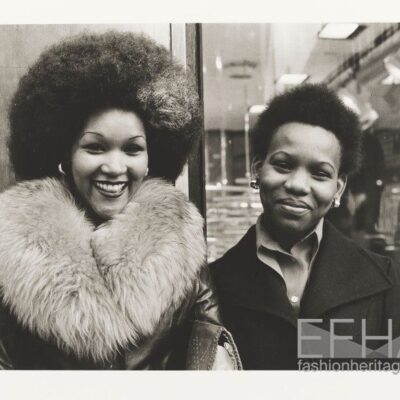
Fashion & History 30.10.2023
05.05.2021
American fashiondiversityEuropean fashion
Introducing a new blog project on diversity in fashion- words by Elisa Fulco
We talk more and more often about environmental sustainability; however, despite the close relationship that links them together, very little is said about the social sustainability of fashion. The blog Tu es canon. Pour une manifeste de la mode inclusive, conceived by Elisa Fulco and Teresa Maranzano, and promoted by the ASA Mental Handicap Association of Geneva, investigates social inclusion in fashion, from the representation of diversity (race, gender, sexual orientation, size, age) to the potential of ‘adaptive’ fashion (including the use of 3D for the production of tailored garments), to the role of disabled people in co-design paths (designed by, with and for). It is no coincidence that the principle “Nothing about us without us” guided the drafting of the inclusive fashion Manifesto that will be presented on May 27, 2021 at the Comédie in Geneva: 7 points inspired by Design for All in which we demand freedom of choice, right to style, autonomy, ergonomics, representation of diversity and co-design.
The research project reconstructs the origins of adaptive fashion, following the evolution from individual solutions (the DIY of the disabled, American veterans in particular), to the creation of medical devices as a reparative response for the community, up to the pioneering experience of the first adaptive fashion brand, Functional Fashions Line of New York, born from the partnership between the disabled designer Helen Cookman (who patented the first adapted jeans marketed by Levis’ in the 1970s), and the fashion editor of New Times Virginia Pope. The experience catalysed the innovations introduced by American sportswear. The legacy of this first step is today taken up by the brand like Tommy Hilfiger, which in 2017 launched the Tommy Adaptive line (first for children and the following year for adults), Nike and by numerous start-ups that create bespoke suits, combining 3d (Stitch), artificial intelligence (At eye Level, Be Wear) and digital clothing (The Fabricant).
The disabled body, “plus size” and out of the norm, remained “undressed” for a long time; before it was excluded from the catwalks, covers, shop windows and museum installations, while now it is finally conquering new and unexpected spaces, also through an object closely linked to history of fashion and its staging: the mannequin. The first mannequin “Little person”, made in 2018, took the measurements of the activist Sinéad Burke, who described the thrill of being reproduced to scale on the occasion of the Body beautiful: diversity on the catwalk exhibition; likewise, the “curvy” and Paralympic mannequins introduced by Nike in 2019 in London, in the most important shop on Oxford Street, have made headlines, emblematic of the “body positivity” philosophy adopted by the brand.
Already in 1998, the British designer Alexander McQueen, as Guest editor of the magazine Dazed and confused, had edited the issue “Fashion Able?”, The cover of which was dedicated to the Paralympic model Aimee Mullins, for whom in 1999 he designed the wooden prostheses of the famous collection Number 13. In his editorial, he wrote that fashion was in a bottleneck and that it continued to perpetuate the canon (beauty, thinness, fair skin), without dressing and including people with different bodies. His goal through the editing of that issue of the magazine was precisely to give an aesthetic and joyful form to the representation of differences, inviting stylists to duet with disabled models, collaborating with English disabled associations to design adapted and tailored clothes of rare beauty.
Tu es canon collects the stories of inclusive fashion and by recording the change gives space to new forms of sustainability poised between art, fashion, diversity management and disability.